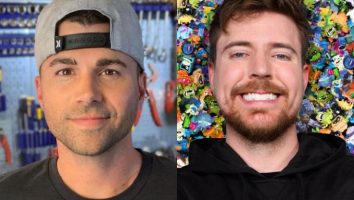Where do successful animated series creators find ideas for new product? There’s no place like home for Boston area-based Jonathan Katz, co-creator (with computer animator Tom Snyder of Tom Snyder Productions) of Comedy Central’s Dr. Katz: Professional Therapist. Katz’s 16-year-old daughter allowed him to tape her phone conversations and ad-libbed stories about her day-to-day high school life for his new short-form series. Julia’s P.O.V., a 13 x 30-second interstitial series, will debut on TNBC in July, and will feature an updated version of the squigglevision computer-animation technique that Tom Snyder Productions developed for the Comedy Central series. Dr. Katz: Professional Therapist landed a prestigious Peabody Award on March 31.
‘It’s truly a real 16-year-old,’ says Robin Schwartz, VP of Saturday morning programming and prime-time series at NBC. ‘She ad-libs-there are no scripts, but she’s writing her own dialogue, developing scenarios and snippets for 30-second interstitials.’ Schwartz says the network is developing the show for prime time, but launching it interstitially on TNBC on Saturday mornings, much like The Simpsons originally debuted as short-form segments within The Tracy Ullman Show on Fox. Ironically, this first animated project undertaken by the teen block-with its slice-of-life concept and real-kid casting and dialogue-reflects TNBC’s mandate to add more realism to its teen programming, says Schwartz.
Comedian Katz, who won an Emmy for his voice work on Dr. Katz: Professional Therapist, says the computer animation technique developed for Julia’s P.O.V. represents an automated version of the original squigglevision technique, which requires that a figure be manually drawn five times and those five drawings be melded digitally to produce an oscillating-line effect. With the newly developed automated version of this process, images need only be drawn once.
According to Chris Georgenes, assistant director of animation and video at Boston area-based Tom Snyder Productions, squigglevision is ‘considerably cheaper’ than cel animation. A full episode of animation is cranked out in two or three weeks in the paperless, 100% computer-based studio that utilizes digital sketch pads at each workstation to record the shaky hand movements of the artists.
Animation is rendered to the audio track provided by Katz-a process that allows a high degree of innovation, says Georgenes. ‘A lot of the improvised [dialogue] shines through in the audio. In this third dimension of interactive animation, characters can talk over each other like in real life.’





















